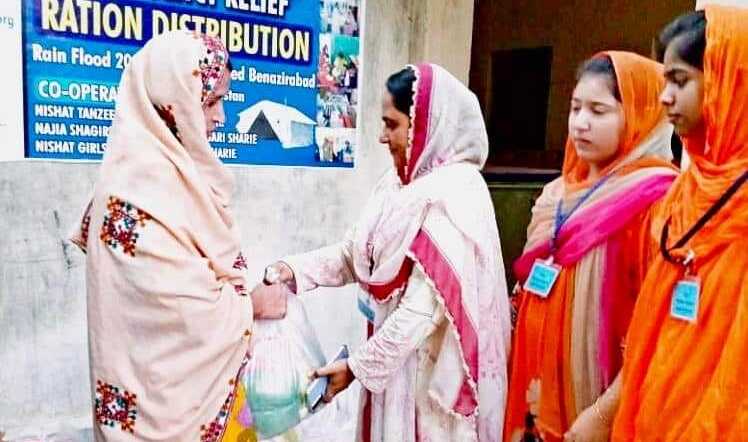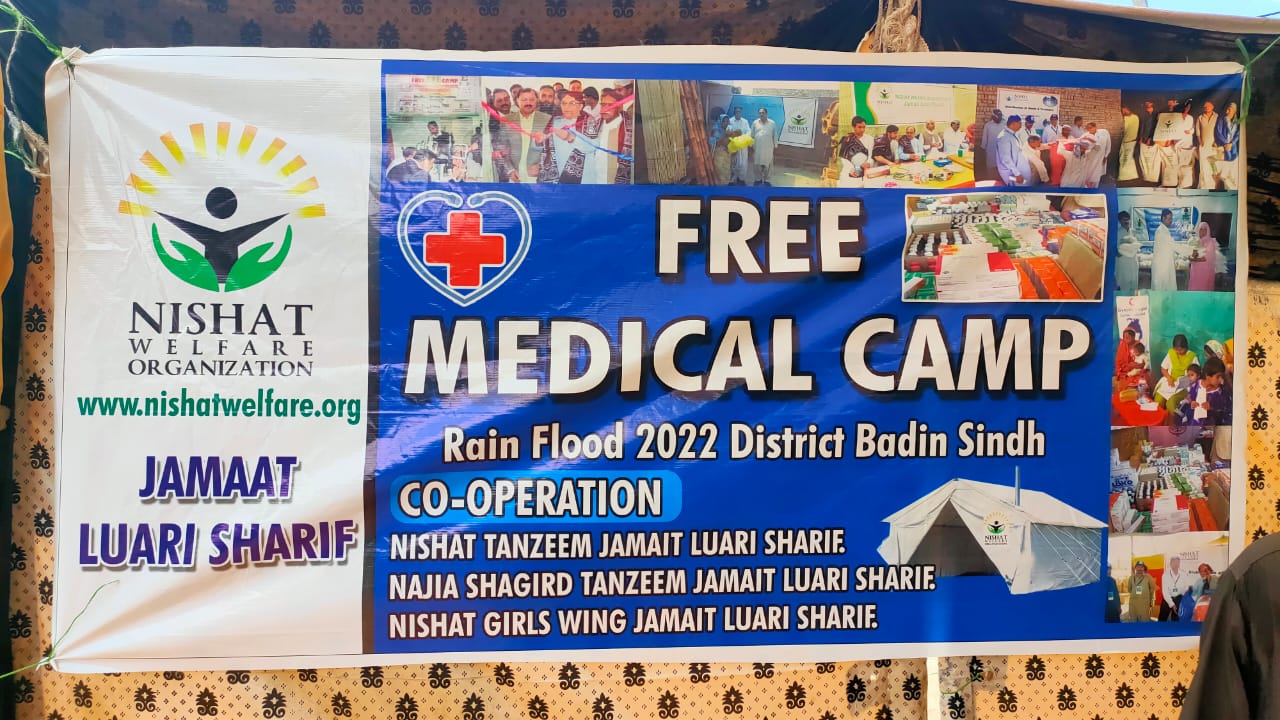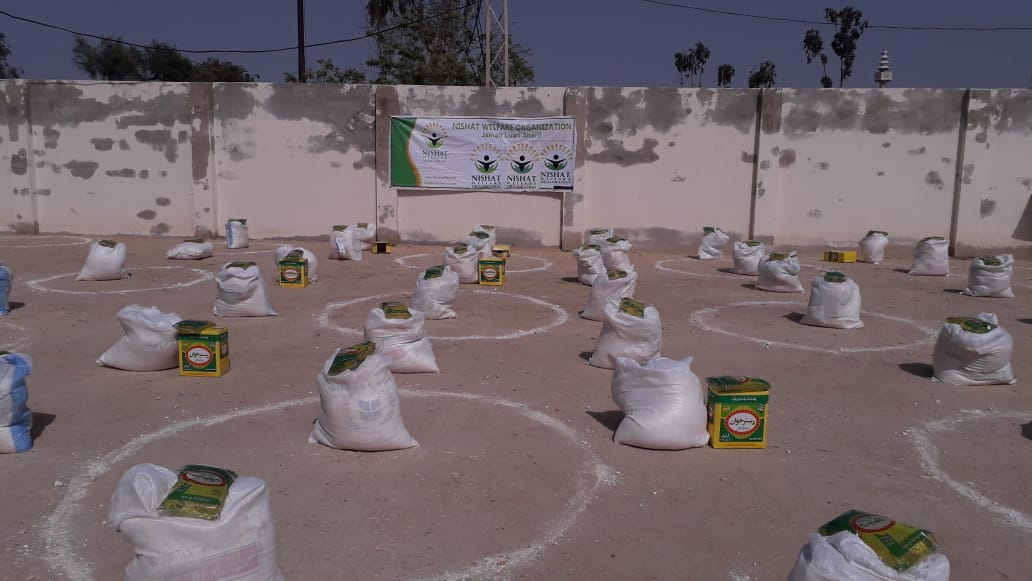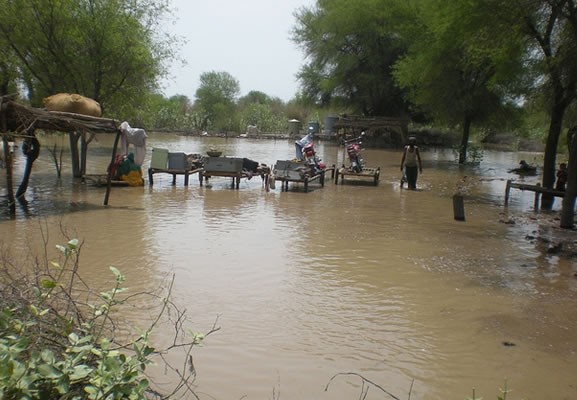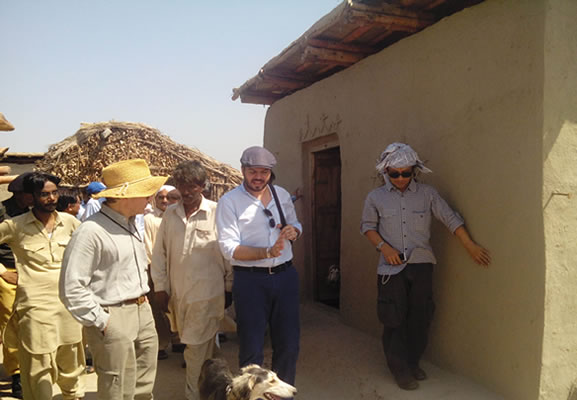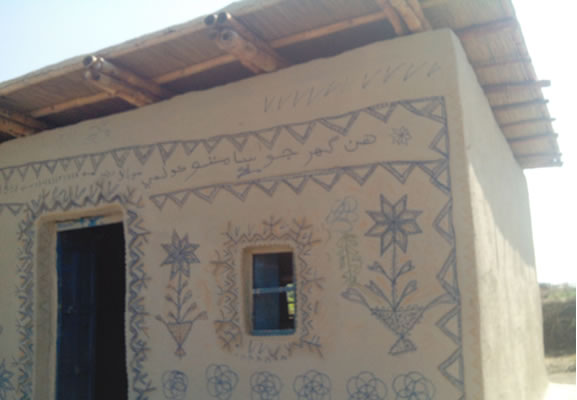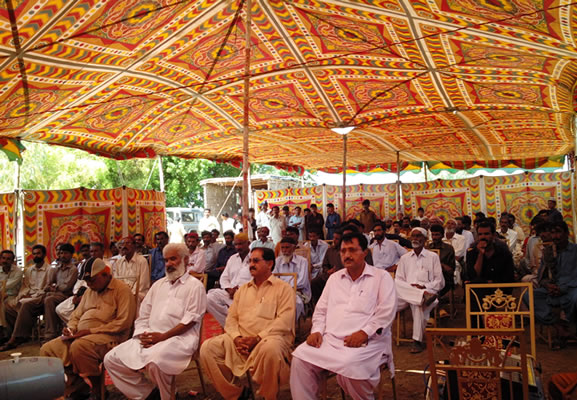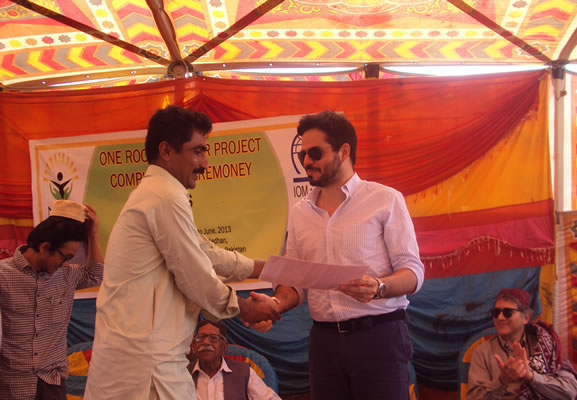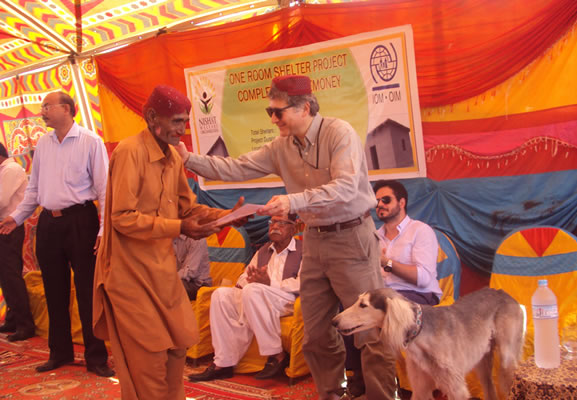Successful completion of 520 One Room Shelter project in coordination with IOM.
Overview
NWO completed yet another milestone of 520 One Room Shelter project with IOM coordination. During the completion ceremony Mr. Manuel & Mr. Hasballah of IOM, Mr. Ali Hasnain GM of UBL and Mr. Sikander Jamali Manager of Pir of Luari Sharif were present.
In the context of heavy rains 2010-2011
UC Kadhan is one of the worst affected areas of district Badin during the heavy rains of 2010-2011. The distance from Badin City is about 40Kms. UC Kadhan has the neighboring UCS of Luari Sharif and Bhugra Memon. 90% of the population of UC Kadhan is rural, ultra poor, dependant on labor wages and major livelihood is agricultural related activities but production is low.
Characteristics of the villages targeted
Majority of the villages are affected during the Rain floods and having damaged mud and loh khat shelters. The density of the House Hold in villages is varying according to the factor of available livelihood and water. Basic civic services like water, electricity, sanitations are unavailable.
Targeted Beneficiaries
The targeted beneficiaries are affected during the floods of 2010-2011. They are uneducated, low in income; majority is related to the agricultural labour, widows and disabled. Women are also working with the men and in some cases women are performing hard work as compare to men. They have the high ratio of ailments and the issues of nutrition in women and children.
Selected Villages
Villages which are affected during the flood 2010-2011 having low income, female headed households, widows, households with disability, chronically ill, households with under the age of fifteen children, tenants, elderly households.
Question: Have the needs of village changed since you conducted your needs assessment?
Needs are still same.
Program development
Basic beneficiary characteristics
Following are the criteria set for the selection of beneficiaries.
- Flood/ heavy rain affected
- Poor low income holder
- Tenants
- Female headed households
- Household with disability
- Chronically ill households
- Household with all member under fifteen
- Household at least one member above sixty
Selection of beneficiaries?
Beneficiaries were selected through democratic process for this purpose initially NWO team called for Broad Based Community Meetings in which all the villagers participated, during meeting the policies and procedures declared and shared the criteria. Village Committees was formed consisting of 15 members with participation of females. After the completion of meeting selection process started and Households who met the criteria were selected then Focal Point was selected for further proceeding.
Process for including minorities
In every village all the community members participated either they belong to majority or minority. Minorities’ clusters were also selected separately to give them extra benefits.
Involving Women in the process
Females were participated from the very first meeting of the community till the selection of beneficiaries. Even in some clusters females are playing the lead roles.
Construction
Conducting Technical trainings ?
In every village technical training conducted as per the policies and procedures of the IOM and used the local language as a basic medium. Simple methods were utilized for the understanding and keeping in view the capacity of the communities.
Following are the details of technical trainings conducted...
- Previous damaged shelters
-
Site selections
- Higher ground
- Orientation of shelter north and south
- 3'3"(1 m) platform for non accessible roofs
- Layout
- String mould according to household size
- Guniya Template 3:4:5
- Lime pits excavations (Soak with water/using plastic sheet)
- Lime slaking process and safety modes
-
Base Preparation
- Removing top soil about to 6"
- 2 feet depth excavation
- 4'6" excavation
- Bottom Compaction with local methods
- PLC ratio
- Lime concrete base lime : sand : aggregate (1:2:4) been laid
- Water level
- Construction of Base and Toe
- Mortar of Soil and water mixing for 7 days
- Lime mud (1:6) mixed with chopped straw
- Slope of 30 degrees toe up to plinth level
- Lime usage in mortar
- Raise Wall to Lintel Level
- Mud Bricks or layered mud walls with thickness of 18" (450mm)
- Lintel level 7' (2100 mm)
- Usage of multiple bamboo lintel extends 1' (300 mm)on both sides of door or windows opening
- Width of door 3' (900 mm) and windows 1'6"
- Wall Heights with Water Level
- 8'6" front wall and rear wall 8'.
- Preparation of Roofs
- Centre line for joist location on top of walls
- 6"x6" pockets on center location
- Grouting of the pockets, consistency and levels
- Ring Beams
- Placement of prefabricated bamboo ring beams at centre of wall
- 4" (100mm) bolts kabla at joist center lines
- Lime concrete grouting in each pocket
- Placement of steel plate in each ring beam
- The process of quality work
- Technical guidelines
- Loh Khat Shelters
- Mud Wall and Bricks Wall shelters
- Typologies (Carvan Roof, Double Pitch, Mono pitch, Chora)
Were "Build Back Better" posters made available to beneficiaries?
In every village build back better posters were available for the better understanding of BHHs.
Providing technical monitoring to households constructing ORS
Technical guidelines and assistance provided to BHHs during the construction. Extra Social mobilizers were hired to motivate them. Technical persons were round the clock available in the field for monitor and assistance. M&E officer was specially hired to control the quality of work and identified the gaps on site.
Following DRR recommendations by the beneficiaries
BHHs built their shelter s on safer places and followed the DRR instructions given by IOM and NWO.
- Site Selection for shelter
- Selection on high level as water can not touch that area
- Excavations excavated 4’.6’’
- PLC usage according to the given ratio lime:sand:aggregate (1:2:4)
- Base filled with mortar and lime
- Plinths preparation and proper toe preparation
- Usage of maximum lime in construction
- Mud / Brick Walls construction
- Loh Khat Walls Construction
- Lintle level according to the DRR standards
- Water Level
- Preparation of roofs
Any changes or refinements in the implementation methodology?
- Initially the manual given by IOM and training conducted by HF had some design differences.
- NWO provided the technical assistance to develop the new Brick using the lime ratio which was tested and approved by IOM technical team.
- After the walls training Heritage Foundation approved Mono pitch roof front wall at 8’6’’ and rear wall 8’ but before this front wall was 8’(2400mm) and rear wall was 11’ (3300mm).
IOM donor visibility Activities
Conducting donor visibility activities
- In all phases and activities.
- Assessment
- Verification
- Trainings
- Physical work
- Community Responses regarding ORS
- Skilled Labor regarding IOM shelters
- Lime usage and safety modes
- DRR standards
Complementary Activities
Were there any other organization/agency working in the same village for any other sector e.g. Wash, infrastructure, Education etc.?
National Rural Support Program (NRSP) is working on community physical infrastructure and LHDP is working on agriculture sector (Livelihood).
Results achieved
Program achievements?
Unskilled labors gained skilled regarding shelters, they are in learning process and once they get skills they would be treated as skilled labor and will build their shelters.
Major achievements of the ORS program
- Proper construction process
- New typologies
- Usage of lime
- DRR standards
- Technical skills
- Quality work
Progress Against Targets
| Total Target | 520 |
| Total Identified | 520 |
| Total plinths complete | 520 |
| Total Walls complete | 520 |
| Total Roofs complete | 520 |
Lessons learned during programme implementation
- The duration of Shelter processes should be specific and should be according to schedule otherwise the delays created many problems in all respects.
- IOM and HF technical trainings remained fruitful for the beneficiaries and IPs equally.
- The procurement system for the material purchasing of beneficiaries are essentials and vital. IOM has taken step and facilitated the community to overcome the shortage of material and price reduction.
Constraints if any during implementation!
- Delay in 1st tranche of beneficiaries which will stop the momentum and tempo of the work.
- Material purchasing
- Inflation
- Influence of the Wadeeras/landlords which created many issues including migrations of beneficiaries.
- Environmental changes (Rains, water level etc)
- Seasons of agricultural crops.
- Cultural events (marriages, etc)
- Elections
- Shortage of material and skilled labor
